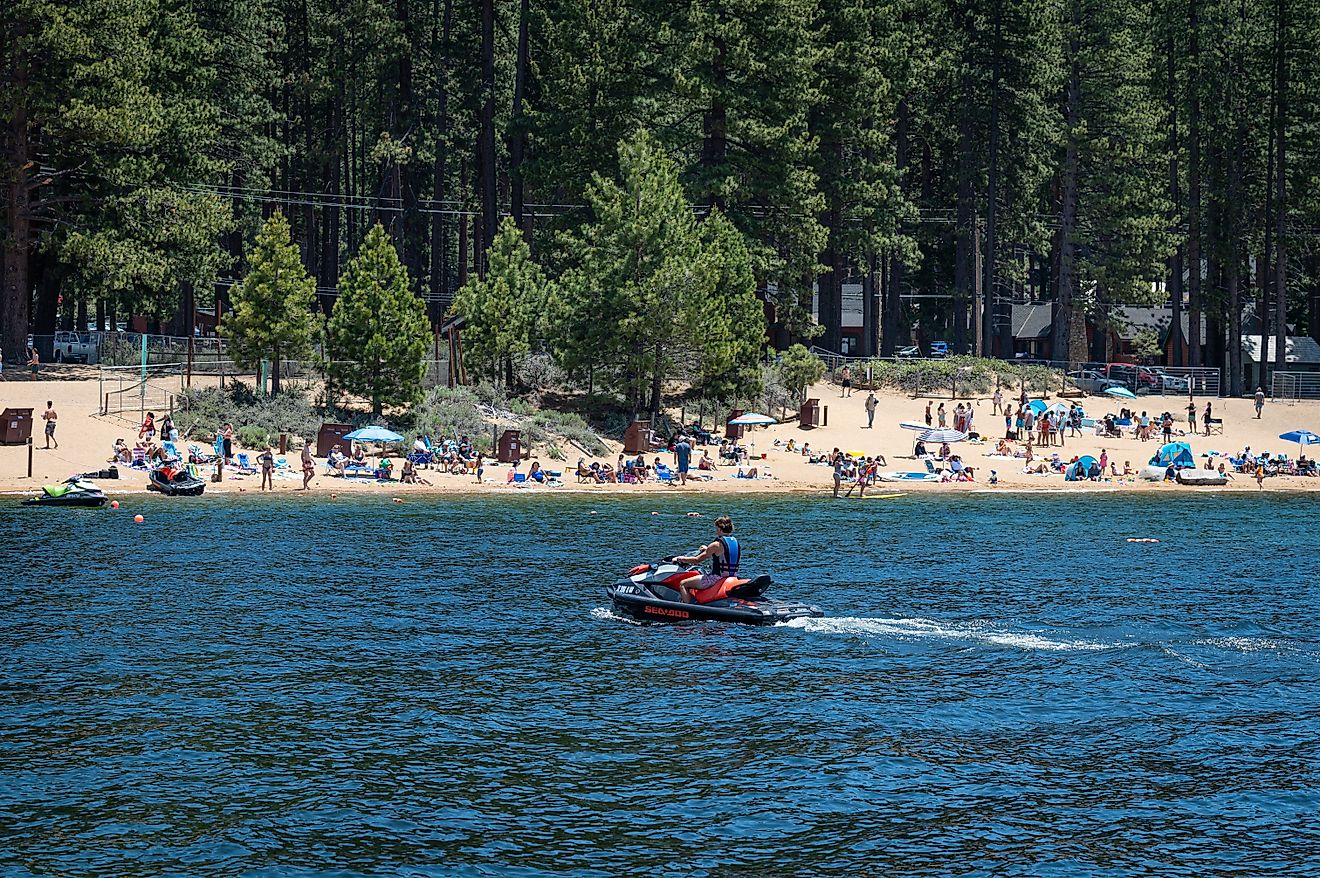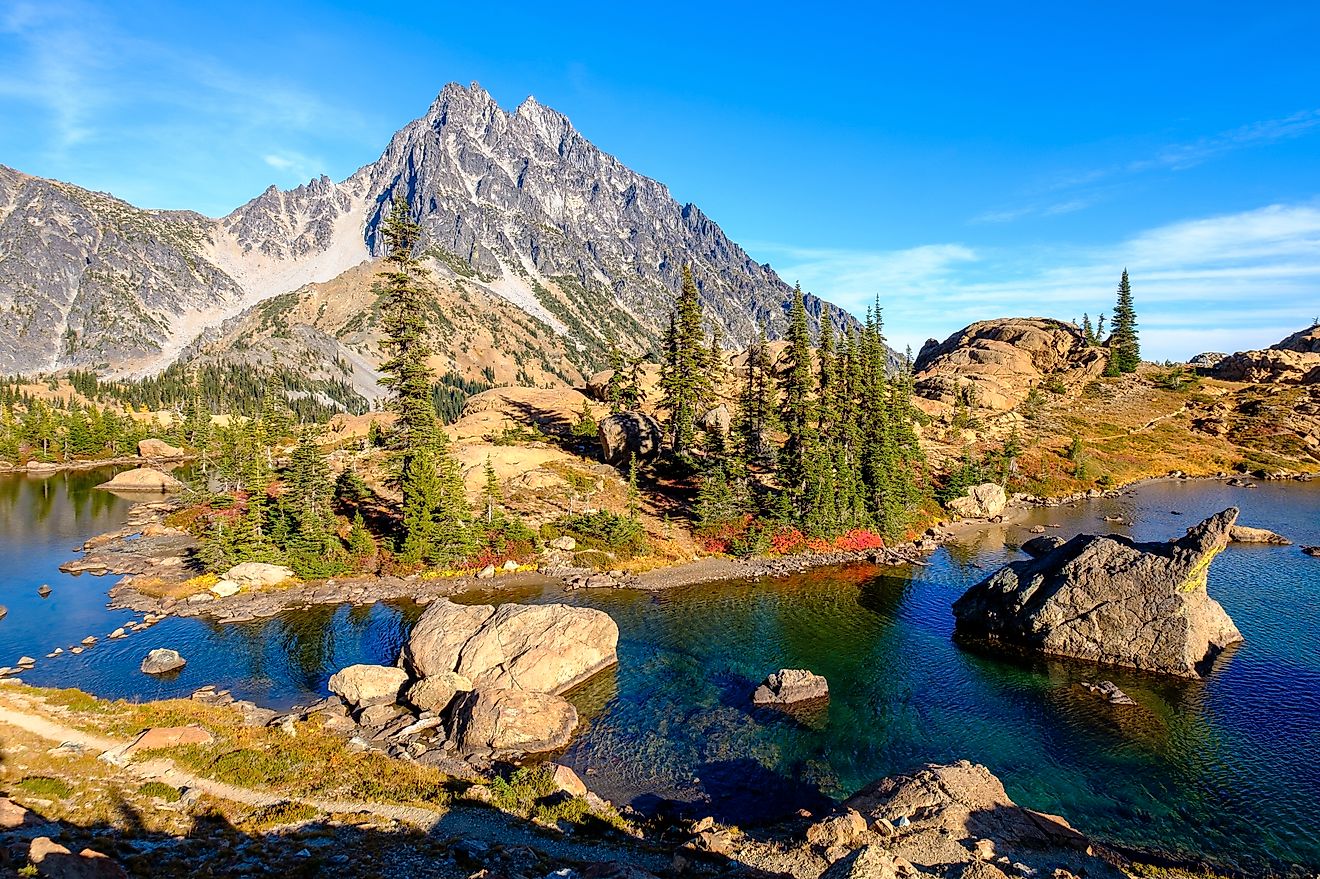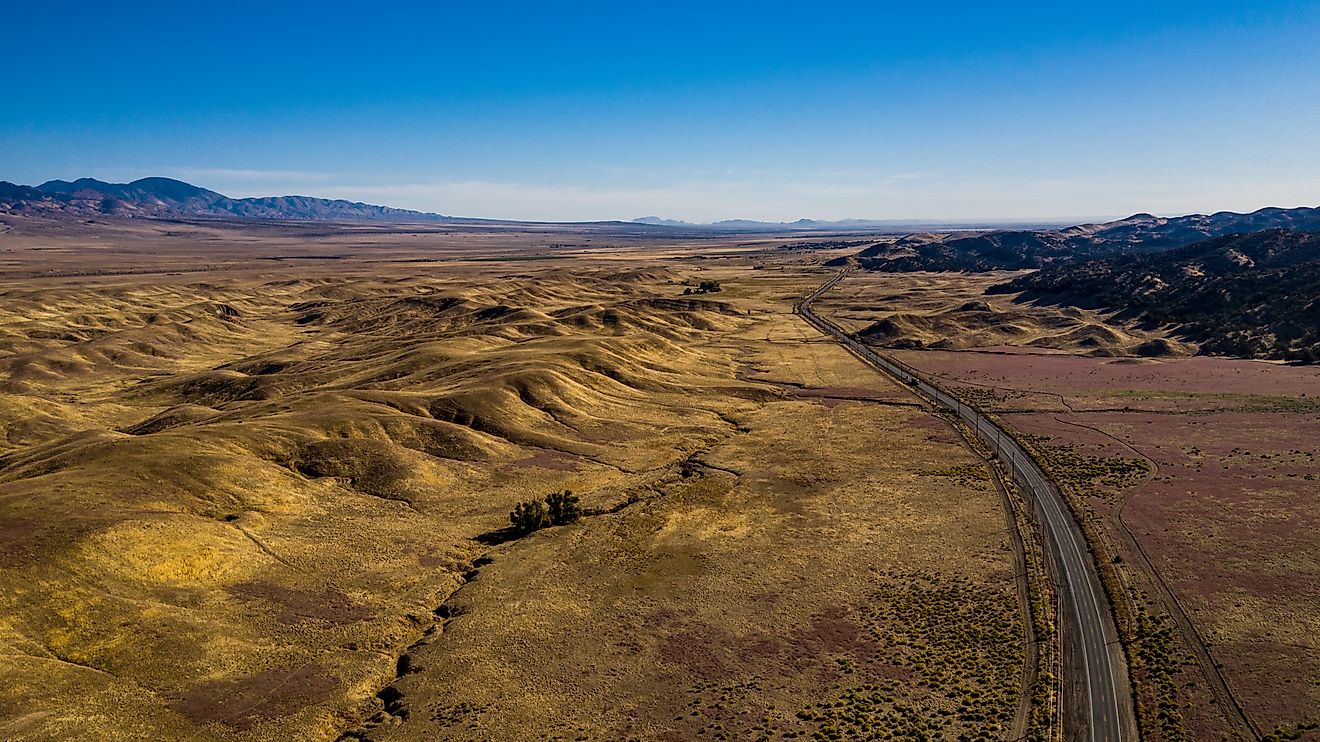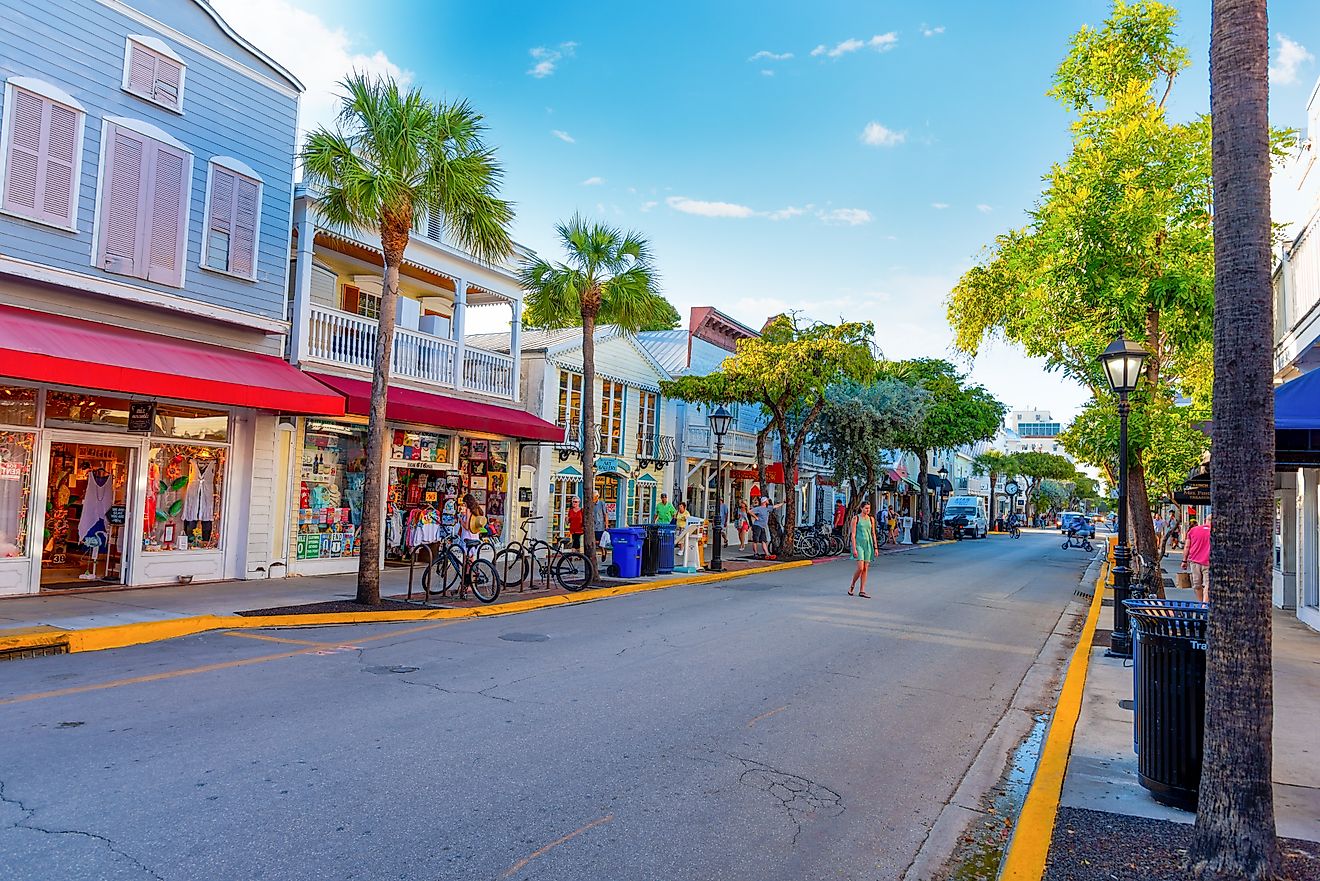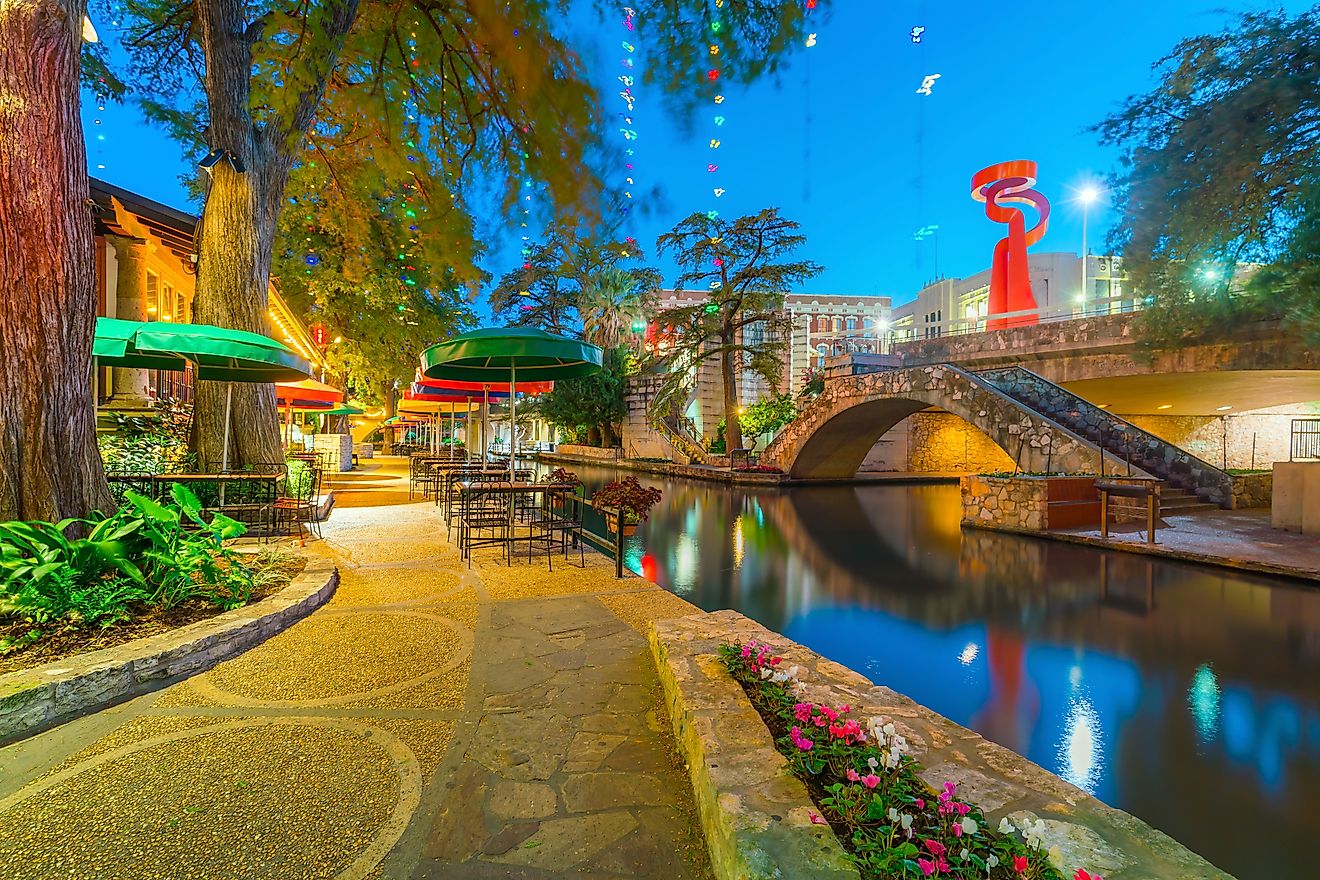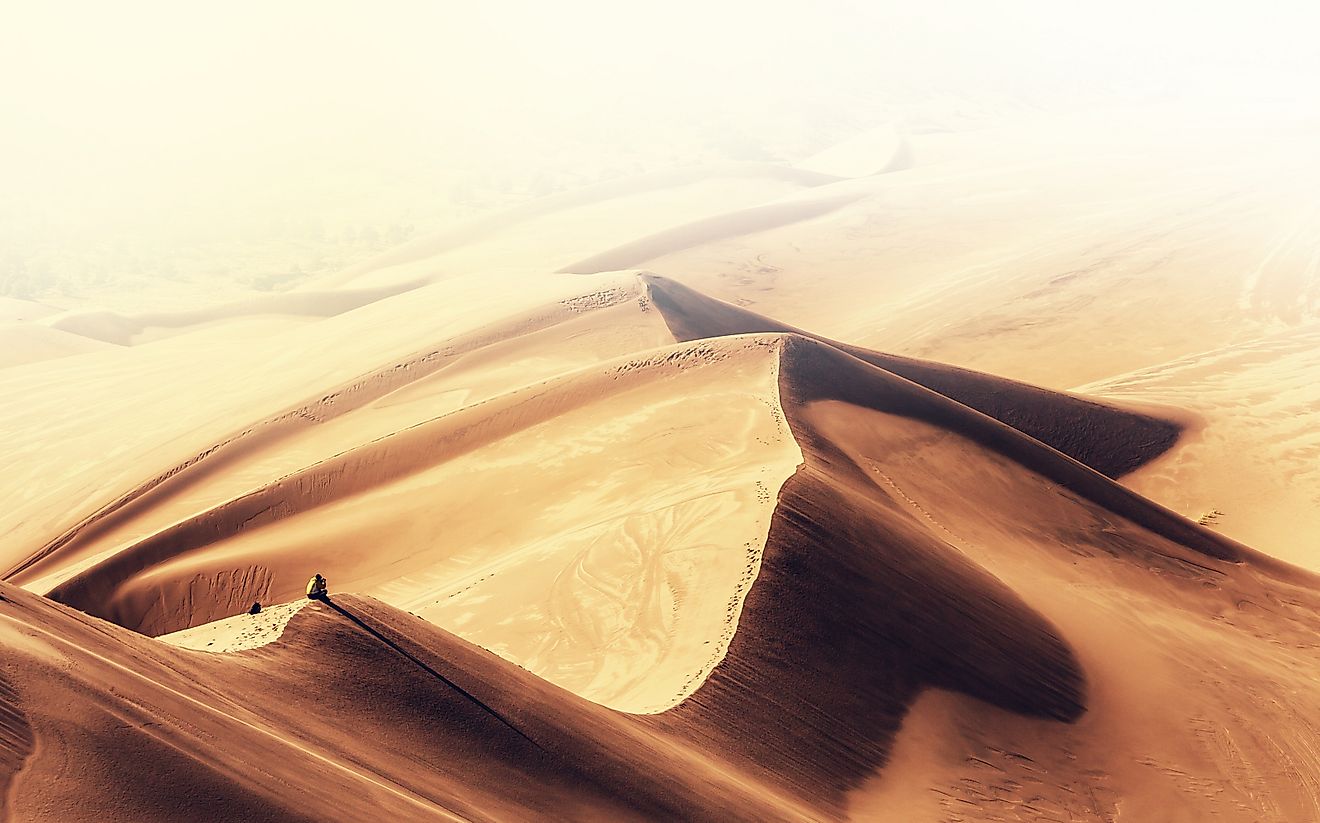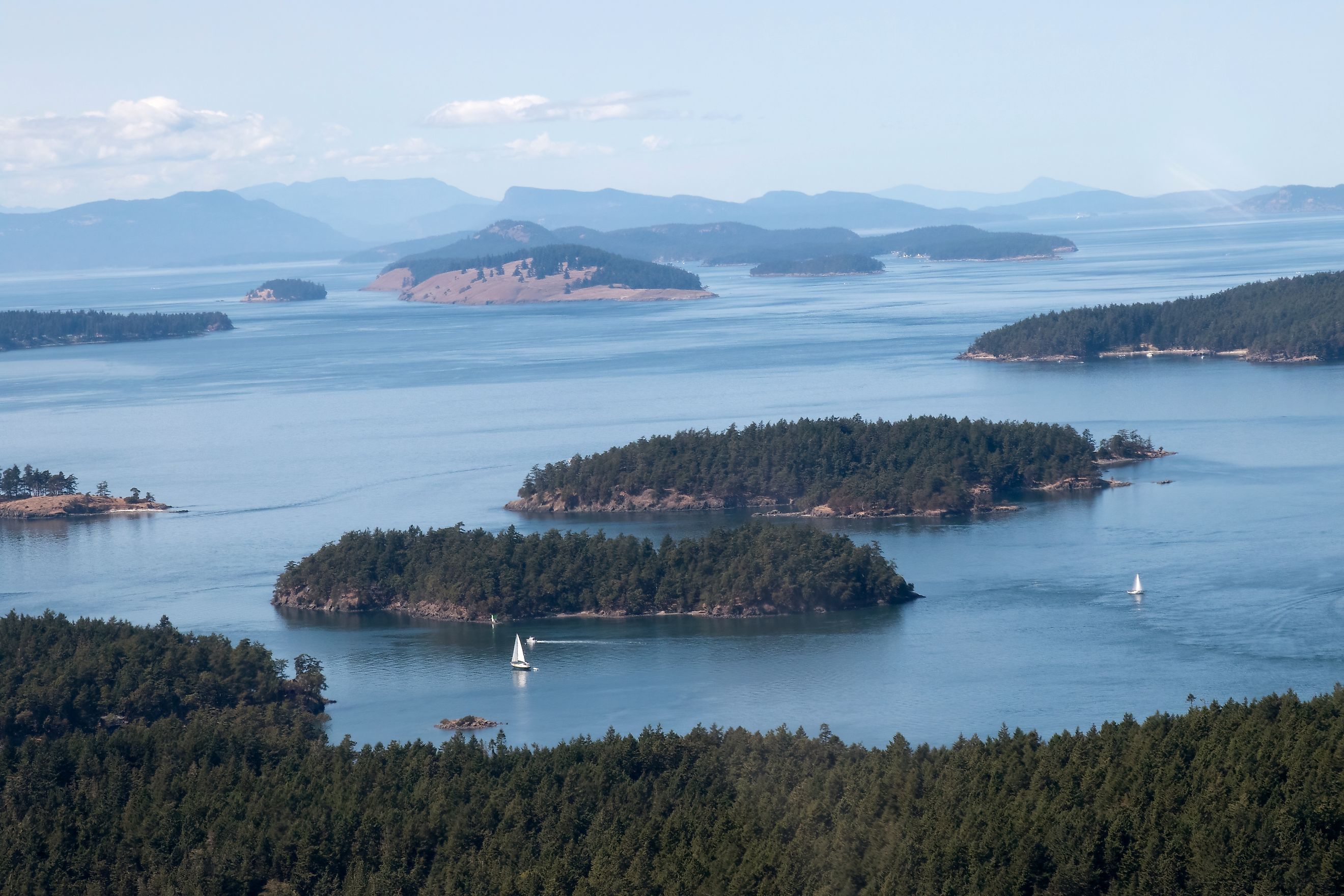
The States With the Most Islands
When people think about islands in the United States, places like Hawaii or the Florida Keys typically come to mind. But beyond the familiar palm trees and turquoise waters, many US states boast impressive numbers of islands—some in saltwater, others scattered across freshwater lakes and rivers. These islands can be remote and wild, developed and populated, or entirely off the radar.
While not all states keep an official tally of islands, several have been surveyed and documented over the years, offering a fascinating glimpse into America’s diverse geography. Some of the top island-holding states may surprise you, especially those located far from the ocean. Here are the states with the most islands, ranked by official or widely recognized counts.
Alaska – Over 2,600 Islands

Alaska has more islands than any other US state by a wide margin. With more than 2,670 named islands and many more unnamed or uncounted, it dominates the list. These islands are spread across the state's expansive coastline, especially in the southeast and western regions.
The Alexander Archipelago contains more than a thousand islands along Alaska’s Inside Passage. These forested, mountainous islands are home to small communities like Sitka, Wrangell, and Ketchikan, where seaplanes and ferries are essential forms of transportation. Further southwest, the Aleutian Islands extend toward Russia in a dramatic arc of volcanic landmasses. Some of these islands are part of military installations or wildlife refuges, while others are rarely visited due to their harsh conditions.
Kodiak Island, the second-largest island in the United States, sits off the southern coast. Known for its brown bear population, it supports a significant commercial fishing industry. Many of Alaska’s islands are home to Indigenous communities, who have relied on marine resources for thousands of years. The rugged beauty and isolation of these islands also attract adventurous travelers seeking wilderness experiences, from kayaking and fishing to whale watching and birding.
Michigan – 1,709 Islands
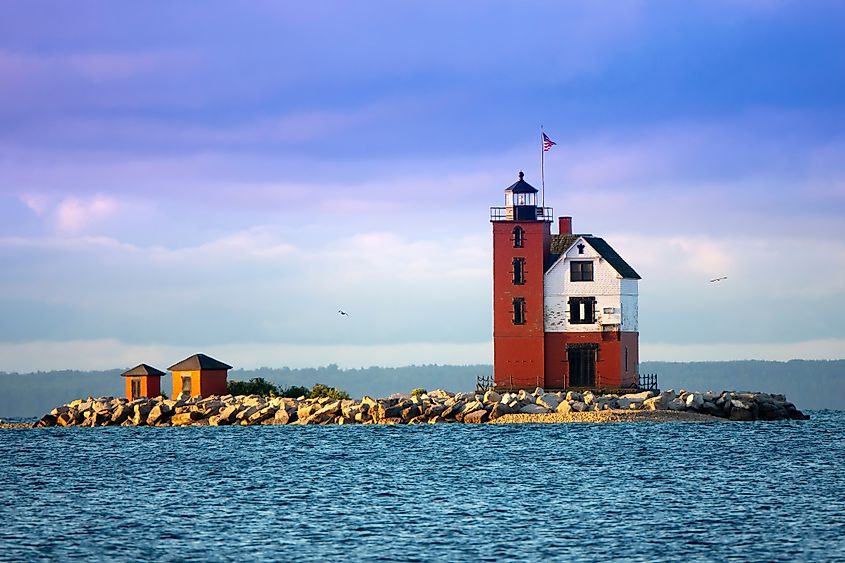
Michigan ranks second in the nation with 1,709 islands. Nearly all of them are found in the Great Lakes—particularly Lakes Huron, Michigan, and Superior—though some are located in the state’s inland lakes as well. Michigan's geography, defined by two peninsulas surrounded by freshwater seas, makes it one of the most unique island-rich states in the country.
One of the most famous islands in the state is Mackinac Island, located in Lake Huron. Known for its car-free streets, historic architecture, and horse-drawn carriages, Mackinac Island draws hundreds of thousands of visitors each year. Isle Royale, another standout, lies in the northwestern reaches of Lake Superior. It is part of Isle Royale National Park and is only accessible by boat or seaplane. The park is known for its isolated ecosystem, including long-term studies of wolves and moose populations.
Beaver Island, situated in Lake Michigan, is the largest island in that lake and has a rich and unusual history. Once home to a breakaway Mormon kingdom, it now serves as a quiet vacation destination with a strong sense of community and an abundance of natural beauty.
Michigan’s islands are often surrounded by cold, clear waters and rocky shorelines. Many offer remote camping opportunities, lighthouses to explore, and protected habitats for wildlife including eagles, loons, and migratory birds.
Maine – Over 4,600 Islands

Maine has one of the most intricate coastlines in the country, with more than 4,600 coastal islands located off its eastern shores. Only around 1,300 of them have official names. These islands range in size from tiny, wave-swept rocks to large inhabited landmasses with their own towns and schools.
The largest and most visited is Mount Desert Island, home to Bar Harbor and Acadia National Park. This island features rocky beaches, carriage roads, pine forests, and Cadillac Mountain, the tallest peak on the US Atlantic coast. Other well-known islands include Vinalhaven and North Haven, both of which support year-round fishing communities and artist enclaves. Islesboro, another inhabited island, has long attracted summer residents seeking solitude and sea breezes.
Some of Maine’s islands are reachable only by private boat or mailboat, while others are accessible by public ferry. The state also has a long history of private island ownership. Many small islands host seasonal homes or historic lighthouses. For hikers, paddlers, and artists, the islands offer raw beauty and a slower pace of life, far removed from the bustle of the mainland.
Florida – More Than 4,500 Islands
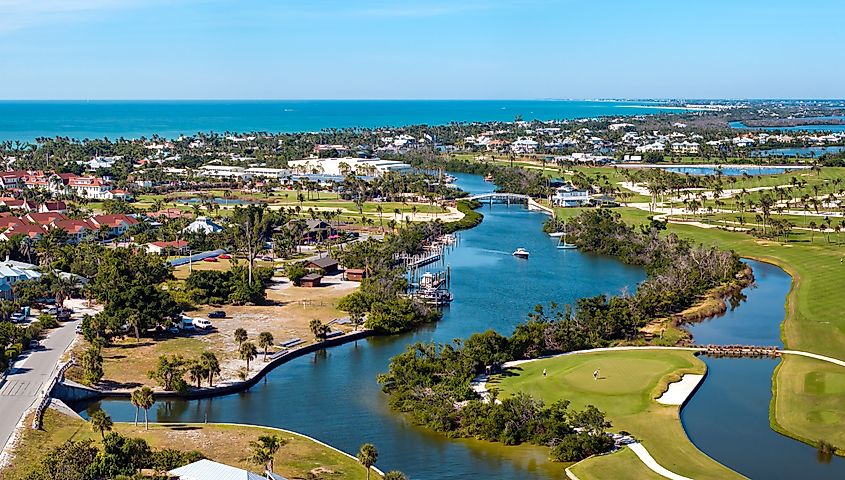
Florida has more than 4,500 islands that measure 10 acres or more, making it one of the most island-rich states in the continental US. Its islands are mostly found along the Atlantic and Gulf coasts, although numerous small islands also exist in inland rivers and swamps.
The Florida Keys form the state’s most iconic island chain. These coral cay islands stretch from Key Largo to Key West, forming a 120-mile tropical highway over turquoise waters. The Overseas Highway connects the islands via a series of bridges, drawing millions of tourists every year. Many of these islands are densely developed with resorts, restaurants, and marinas, while others are designated wildlife refuges.
Off Florida’s Gulf Coast, islands like Sanibel, Captiva, and Pine Island are known for their shell-covered beaches, bird sanctuaries, and luxury vacation homes. On the Atlantic side, islands like Amelia Island and Hutchinson Island offer a mix of history, golf courses, and wide sandy beaches.
Florida’s islands are diverse in character. Some are barrier islands that protect the mainland from storms, while others are man-made or altered by dredging and development. Together, they help define Florida’s identity as a water-loving, sun-soaked state.
Wisconsin – Over 400 Islands
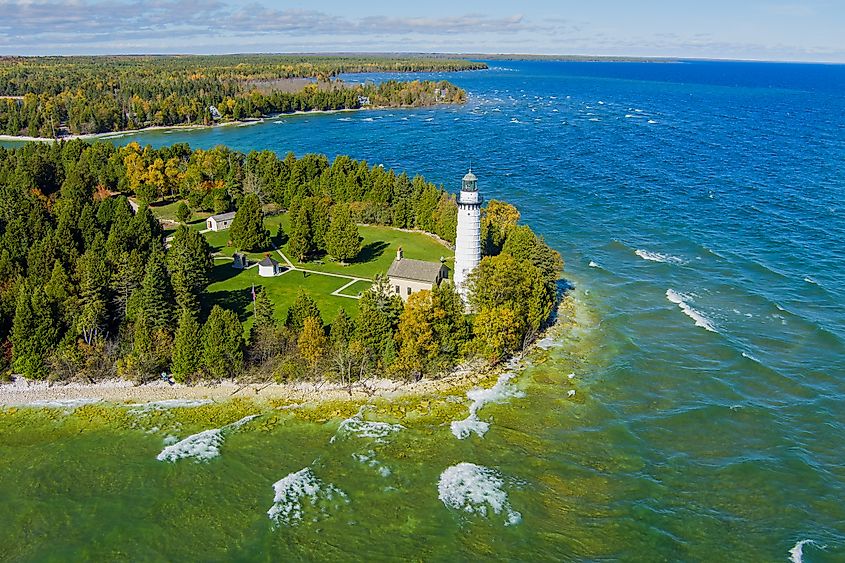
Wisconsin may not be the first place that comes to mind when you think of islands, but the state contains more than 400 of them, many located in the Great Lakes and various inland waters. Wisconsin’s portion of Lake Superior includes the Apostle Islands, a group of 22 scenic islands that form part of a protected national lakeshore.
The Apostle Islands are a standout destination for kayaking, hiking, and camping. Known for their red sandstone sea caves and historic lighthouses, the islands offer visitors a true back-to-nature experience. In winter, the caves sometimes become accessible on foot via ice, drawing thousands of adventurers if conditions allow.
Washington Island is another major island, located at the tip of Door County and accessible by ferry. It has a year-round population and is known for its lavender fields, art galleries, and hiking trails. Nearby Rock Island, which has no vehicles and no permanent residents, is home to an Icelandic-style boathouse and a state park that feels untouched.
Wisconsin’s islands are less crowded than those in more tropical states, offering quiet beauty and a strong connection to nature. Many are preserved for public use and attract visitors looking for hiking, solitude, and time on the water.
Washington – Approximately 400 Islands
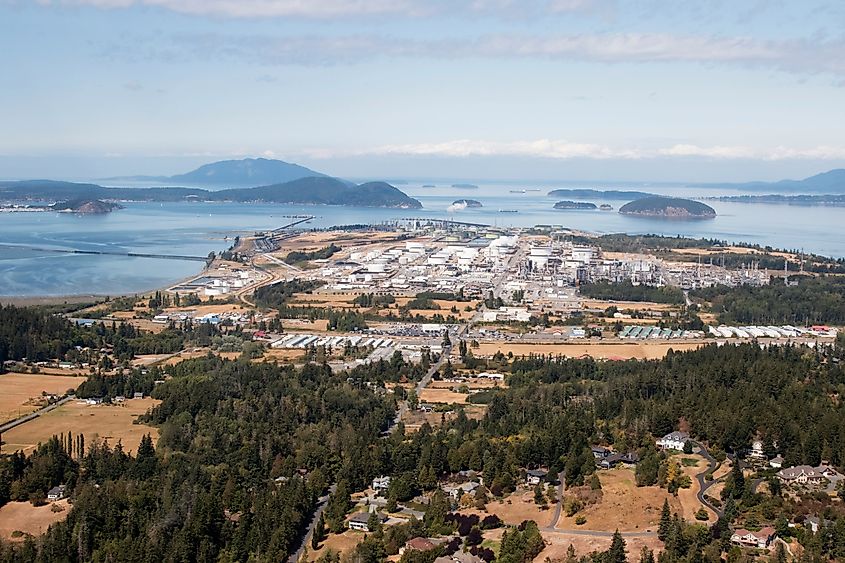
Washington has around 400 islands, primarily located in Puget Sound and the Salish Sea. These islands are well known for their combination of natural beauty, maritime culture, and accessibility from Seattle and the surrounding region.
The San Juan Islands are the most famous, consisting of several inhabited islands including San Juan, Orcas, and Lopez. These islands are popular for their orca whale sightings, picturesque harbors, lavender farms, and art galleries. Orcas Island features Mount Constitution, which offers panoramic views of the sea and nearby Canadian islands.
Whidbey Island is one of the largest in the contiguous United States and features charming towns like Coupeville and Langley. The island is connected to the mainland via bridges and draws visitors with its coastal parks, farmland, and cultural festivals.
Many of Washington’s smaller islands are uninhabited or privately owned, but dozens are accessible by ferry or small boat. The region’s mild climate and scenic coastlines have made these islands popular retirement and vacation spots, offering forested trails, rocky beaches, and relaxed island life.
New York – Over 170 Named Islands
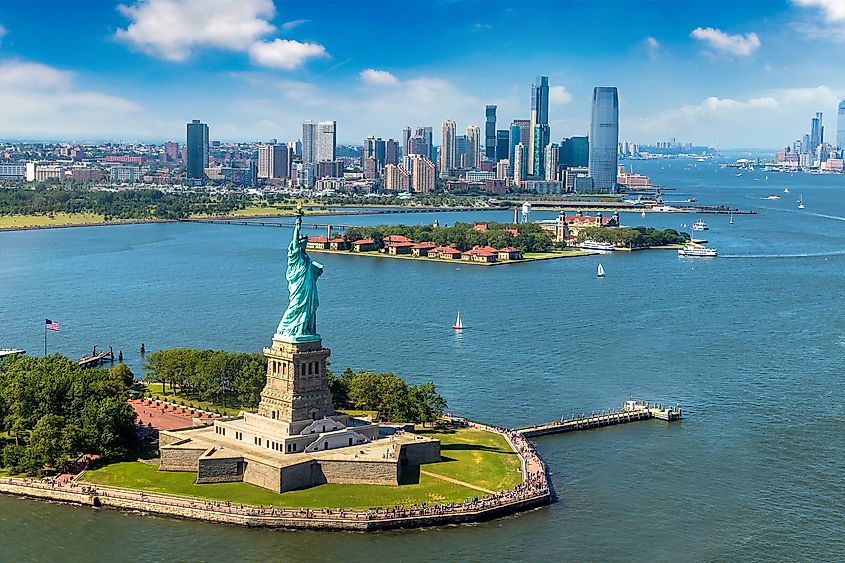
New York has at least 170 named islands, though many more exist when including unnamed or very small ones. These islands appear in a wide variety of settings, from urban river systems to the wilderness of the state’s northern border.
Manhattan is the most famous island in the state and is home to one of the world’s most densely populated cities. Staten Island, another borough of New York City, is larger in area and is accessible by ferry or bridge. Roosevelt Island, situated in the East River, is a narrow residential island that has grown into a unique neighborhood with stunning views of the Manhattan skyline.
Upstate New York offers a very different island experience in the Thousand Islands region along the St. Lawrence River. This area includes more than 1,800 islands shared between the US and Canada. Some of these islands are only large enough for a single tree, while others have elaborate mansions, castles, or historic homes.
The diversity of New York’s islands reflects the variety of the state itself. From bustling urban centers to quiet wilderness retreats, these islands provide a full range of cultural and natural experiences.
Minnesota – Over 14,000 Islands on Lakes

Minnesota contains more than 14,000 islands, nearly all located in the state’s many lakes. This massive number includes everything from large forested islands to tiny rocky islets that serve as nesting grounds for birds. While most are unnamed and uninhabited, they play a vital role in the state’s identity as the Land of 10,000 Lakes.
Voyageurs National Park, located near the Canadian border, is made up almost entirely of interconnected waterways and islands. These islands are accessible only by boat and are popular with paddlers and campers looking for a backcountry wilderness experience. Wildlife is abundant in the area, with frequent sightings of bald eagles, moose, and loons.
Lake Vermilion, one of Minnesota’s largest lakes, is filled with hundreds of wooded islands. Many are used for seasonal cabins and are only reachable by private watercraft. Other notable lakes, including Lake Minnetonka and Rainy Lake, are also dotted with private islands and public recreation areas.
Minnesota’s island-rich waterscapes are part of what makes it a top destination for fishing, boating, and lakefront getaways.
A Nation of Islands, State by State
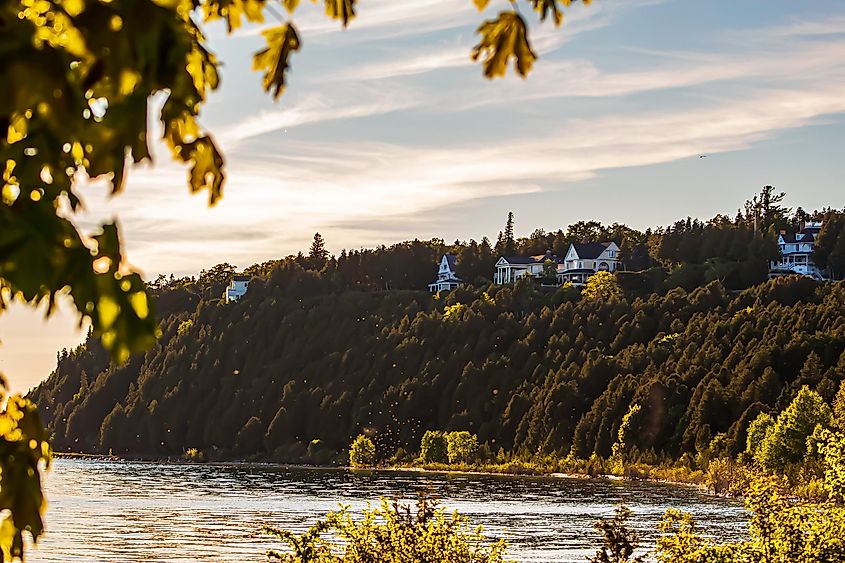
From the icy reaches of Alaska to the sun-drenched shores of Florida, America’s islands are as diverse as the states they belong to. Whether nestled in freshwater lakes or scattered along saltwater coasts, these islands reflect the geographic richness of the country. Some are bustling with communities and culture, others are wild and untouched. But each one adds to the character of its state, offering unique landscapes, histories, and experiences. For travelers and locals alike, the islands of the United States are more than dots on a map—they’re destinations worth exploring, one shoreline at a time.
Ranked: US States With the Most Islands
| Rank | State | Estimated Number of Islands | Notable Island Groups or Features |
|---|---|---|---|
| 1 | Alaska | 2,670+ | Aleutian Islands, Kodiak, Alexander Archipelago |
| 2 | Michigan | 1,709 | Mackinac Island, Isle Royale, Beaver Island |
| 3 | Maine | 4,600+ (1,300 named) | Mount Desert Island, Vinalhaven, North Haven |
| 4 | Florida | 4,500+ (≥10 acres) | Florida Keys, Sanibel, Captiva, Amelia Island |
| 5 | Wisconsin | 400+ | Apostle Islands, Washington Island |
| 6 | Washington | ~400 | San Juan Islands, Whidbey Island, Orcas Island |
| 7 | New York | 170+ named | Manhattan, Staten Island, Thousand Islands |
| 8 | Minnesota | 14,000+ | Lake Vermilion, Voyageurs NP, Rainy Lake islands |
Note: Island counts vary by how states define and measure islands. Some include all land masses in water, others only count named or sizable ones.
Frequently Asked Questions
Which state in the US has the most islands?
Alaska has the most islands of any US state, with over 2,670 officially recognized islands scattered across its vast coastline.
How can a landlocked state like Michigan have so many islands?
Michigan borders four of the five Great Lakes and has hundreds of islands within its inland and coastal waters. Many are large, wooded, and even inhabited.
Are all of Maine’s islands in the ocean?
Nearly all of Maine’s islands are coastal and located in the Atlantic Ocean, especially off the state’s rugged Down East shoreline.
Do Florida’s islands include artificial land?
Yes. While many of Florida’s 4,500+ islands are natural, especially the Florida Keys, the state also has some man-made or enhanced islands created through dredging and development.
What is the largest island in the continental US?
Whidbey Island in Washington is often cited as the largest island in the lower 48 states by land area, though some measurements consider Long Island, New York to be larger depending on how borders are defined.
Are most of the islands in Minnesota accessible?
Many of Minnesota’s 14,000+ lake islands are only accessible by boat and remain undeveloped. However, several are used for recreation, camping, and private cabins.
Can you visit the islands in Alaska?
Yes, but accessibility varies. Some islands are served by ferries or small planes, while others are remote and uninhabited, requiring specialized travel arrangements.
